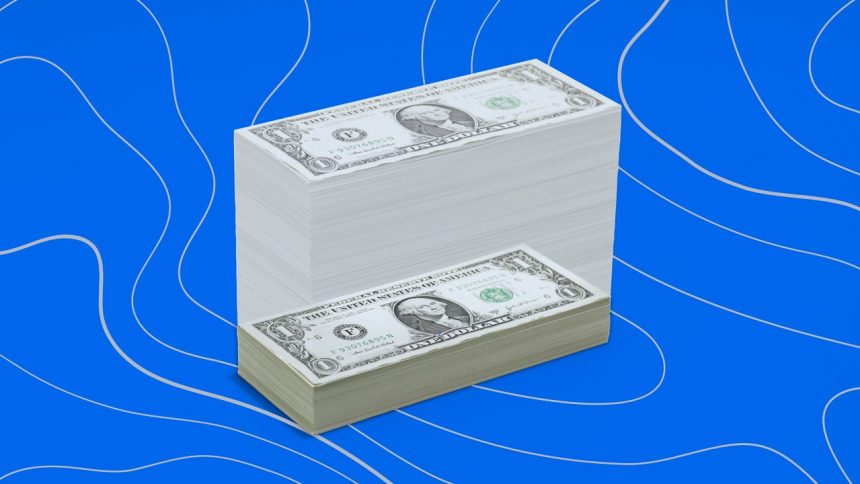Key takeaways
- Bump-up CDs allow you to raise your interest rate at least once during your CD term.
- Guidelines and restrictions on bump-up CDs vary between financial institutions.
- Bump-up CDs are generally most beneficial when interest rates are on the rise.
When interest rates rise, a bump-up certificate of deposit (CD) can help savers take advantage of increasing yields.
In a still-elevated interest rate environment, a bump-up CD – sometimes called a “raise-your-rate CD” – gives savers the option to boost the CD’s annual percentage yield (APY) without having to otherwise change its terms.
Typically, bump-up CDs permit only one rate increase during the term, which suggests that they may be better suited to investors who understand the current interest rate environment and whether rates may go up or down. The terms of some bump-up CDs allow customers to raise their rates more than once.
What is a bump-up CD?
A CD is a savings account with a specified maturity date and a stated rate of interest. Usually, the interest rate stays the same for the life of the CD, but there are some options that permit changes to the interest rate. A bump-up CD allows account holders to increase their rate of return while the CD continues to mature.
As with a traditional, or regular, CD, the depositor commits to leaving the money in a bump-up CD for the entire term, which can be a few months or several years. Most bump-up CDs are two or three years, giving ample time for an investor to opt for a rate increase.
How bump-up CDs work
Because the CD gives the holder the ability to bump up the rate, most bump-up CDs have slightly lower interest rates than traditional CDs. The required minimum amount for a bump-up CD also varies among different financial institutions, though some have minimums as low as $500.
Many bump-up CDs permit a single rate increase, but some (especially those for longer terms) permit multiple bump-ups. There may be rules concerning how much you can bump up the rate at one time. It is always best to check with your financial institution to see what the terms and conditions are for the CD.
Also, keep in mind that if you take your money out of a CD before the maturity date, you can expect to pay a penalty, unless it’s a no-penalty CD.
Bump-up CD example
Let’s say you want to set aside $10,000 for home improvement. You anticipate that you won’t need the funds for a couple of years but want to see the money grow safely in the meantime and take advantage of any increase in rates. A bump-up CD with a two-year term could be ideal, provided you don’t anticipate needing the funds before the term ends.
Now let’s say you invest in a bump-up CD offering an initial 4 percent APY. Then, after a year, rates improve, boosting the APY for a bump-up CD to 4.30 percent. So you use your one bump-up to take advantage of the new, higher rate.
If it turns out that you need your funds during the two-year period, be sure to understand how much the early withdrawal penalty will cost, to determine whether a bump-up CD is right for you.
Advantages and disadvantages of bump-up CDs
If you’re considering a bump-up CD, here are the costs and benefits.
Advantages
- Opportunity to capitalize on rising rates: The biggest advantage of a bump-up CD is the ability to raise your rate over the course of the term. If interest rates increase during the term, you’ll be able to match that increase and earn more interest, more quickly.
- Potentially higher returns: Although bump-up CDs might start with a slightly lower rate, the potential to adjust could lead to overall greater returns.
- No need to monitor constantly: Unlike regularly rolling over short-term CDs to try and capture better rates, with a bump-up CD, you can stay in the same term and adjust the rate when beneficial — or never adjust it at all, if rates decline.
Disadvantages
- Lower initial rates: Bump-up CDs often start with a lower APY than other types of CDs. A traditional CD may net you more interest over the full term than a bump-up CD, depending on market conditions.
- Limited number of bumps: Most bump-up CDs restrict the number of times you can adjust the rate to once or twice. Should rates climb and continue to do so, you may move too soon, missing out on an even greater APY increase.
- No automatic adjustment: You need to proactively request the rate increase. If you’re not paying attention to market rates, you could miss out on the opportunity to bump up.
Should I get a bump-up CD?
Bump-up CDs are most advantageous in a rising rate environment, when you have the potential to earn more during the CD’s term. Although rates are expected to decline in the coming months, there are still opportunities, now, to take advantage of higher rates well above national averages. But it’s still important to compare the initial CD rate offering against other options.
“Don’t just automatically assume that because the CD yield increases on a regular schedule, or provides the option to bump up to a higher yield, that it is your best option,” says Greg McBride, CFA, Bankrate Chief Financial Analyst. “Compare the initial yield being earned with that of the highest-yielding traditional CDs of the same maturity. If you’re trading away too much yield on the front end, you won’t make it up later in the term,” McBridae adds.
Opening a bump-up CD is similar to opening other types of bank accounts, though fewer banks offer them. Be sure to research the details of a bank’s offering, including the maturity term, bump-up frequency, initial APY, initial deposit and early withdrawal fees.
You’ll likely find better rates with online-only banks, but you may be able to find some favorable offers from traditional financial institutions by shopping around. Once you find a bank and an account that suits your needs, you’ll need to fill out an application and read over the account materials.
Alternatives to bump-up CDs
There are several alternatives to bump-up CDs that you may want to consider, depending on what you’re looking for out of your savings:
- Traditional CD: A fixed account with a fixed term and interest rate. Most banks and credit unions typically offer CDs with terms ranging from as short as three months to as long as five years.
- Step-up CD: Similar to a bump-up CD, but it automatically raises your APY at set intervals.
- CD laddering: A strategy for maximizing savings by taking out multiple CDs with different maturities.
–Freelance writer Kevin Payne contributed to updating this article.
Read the full article here














